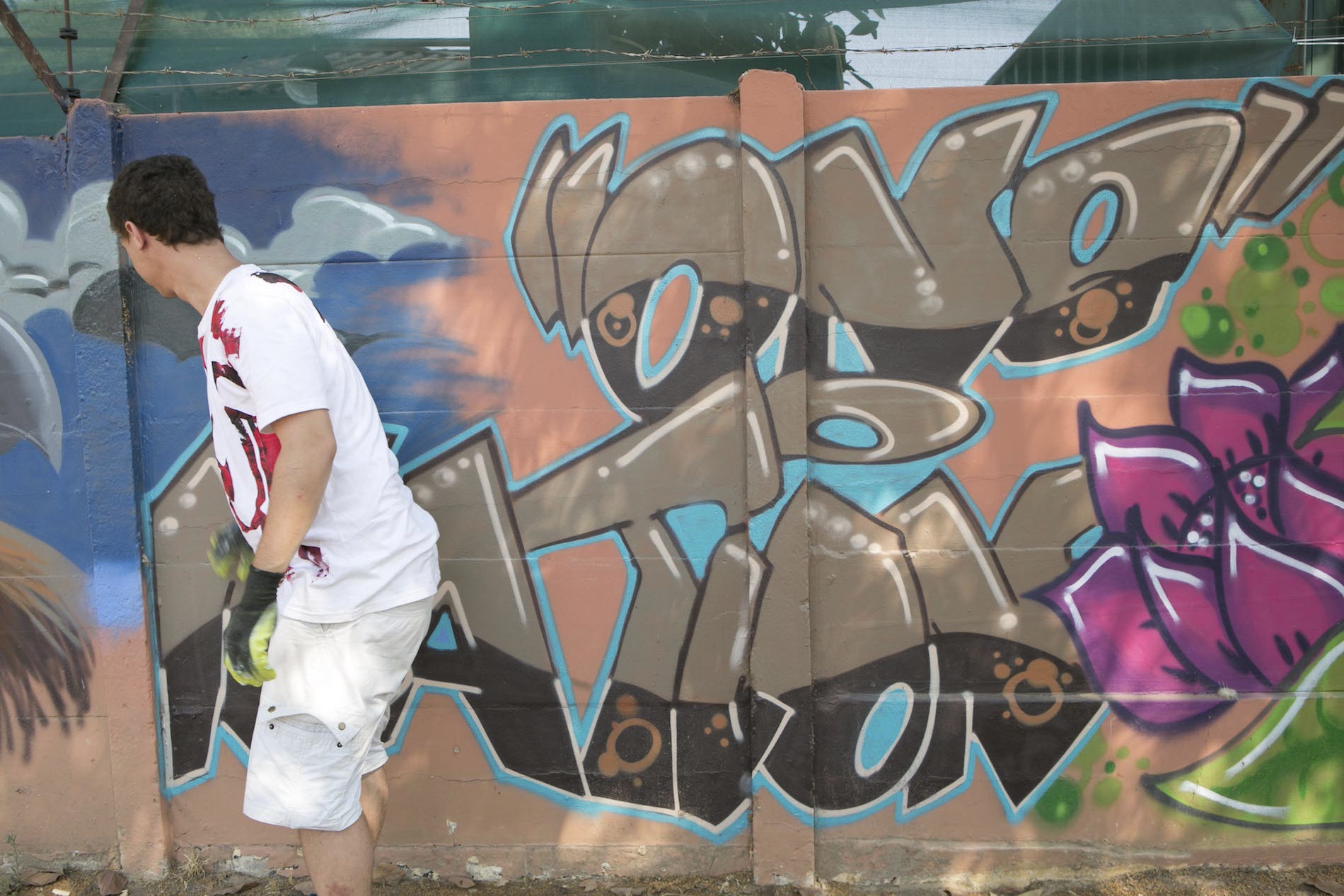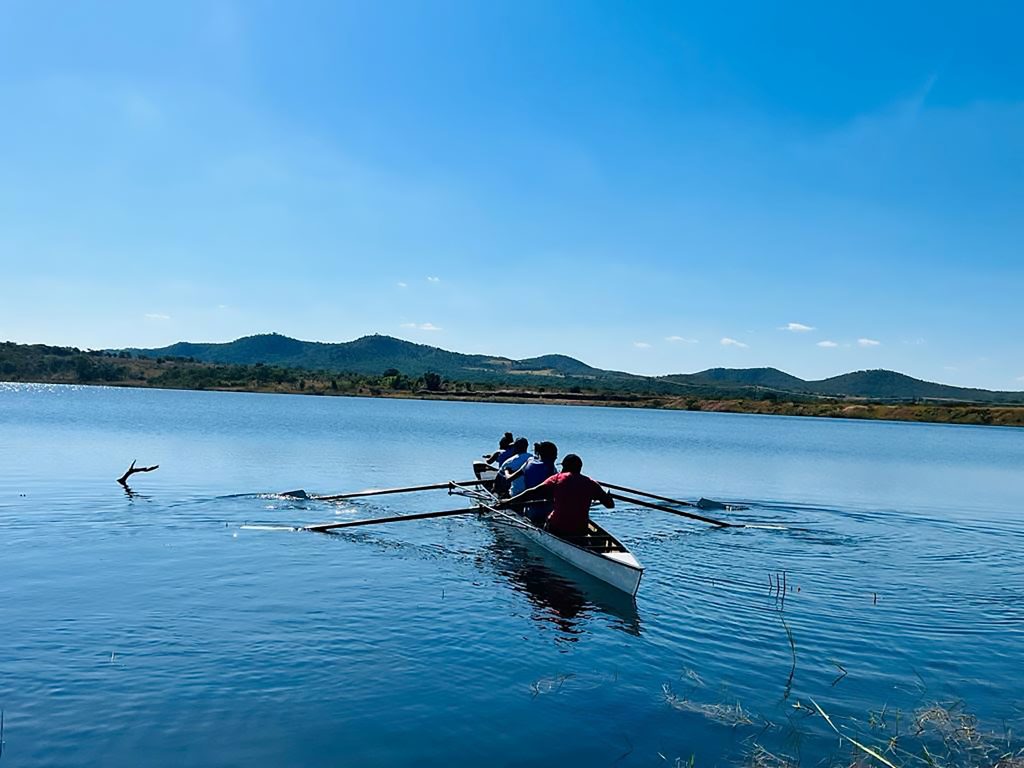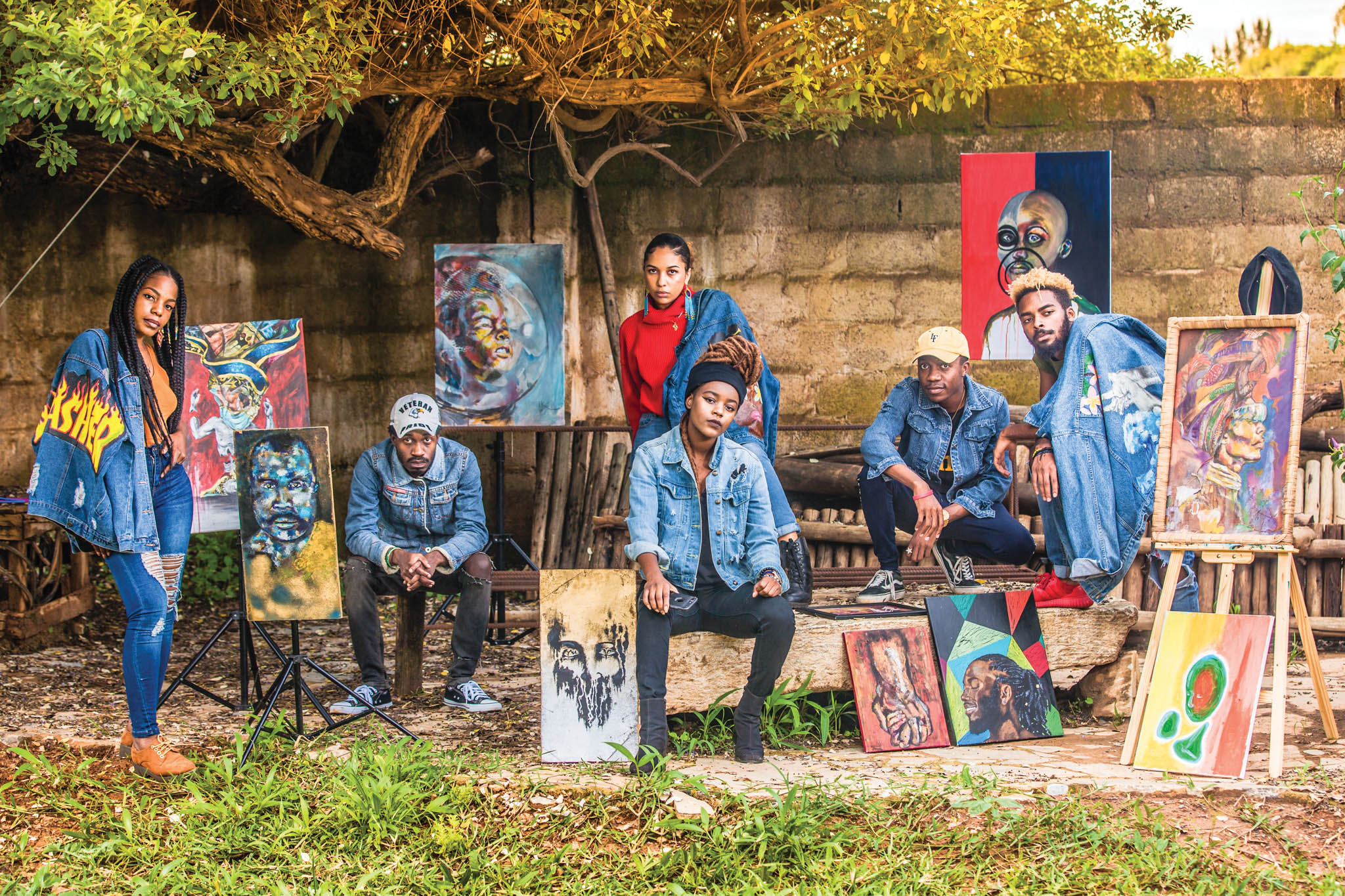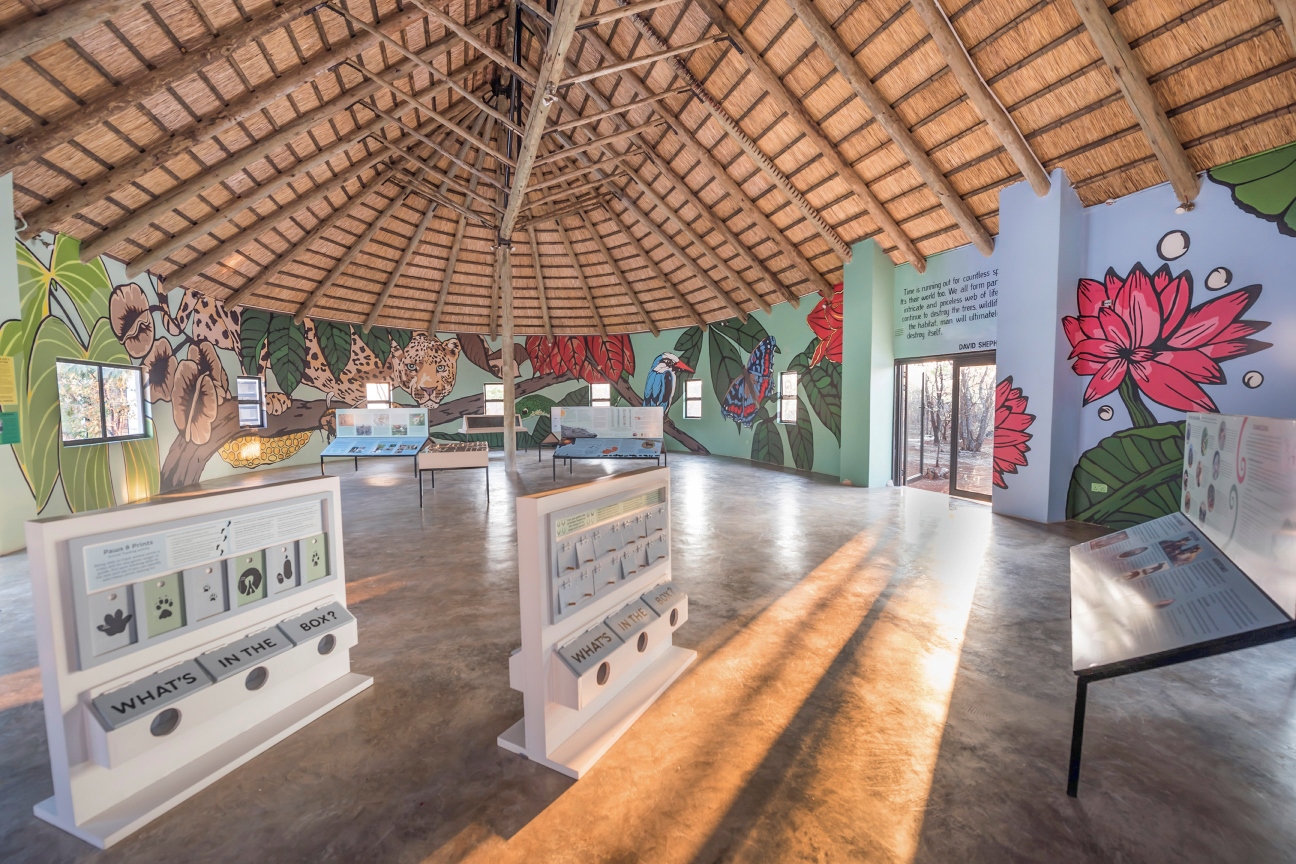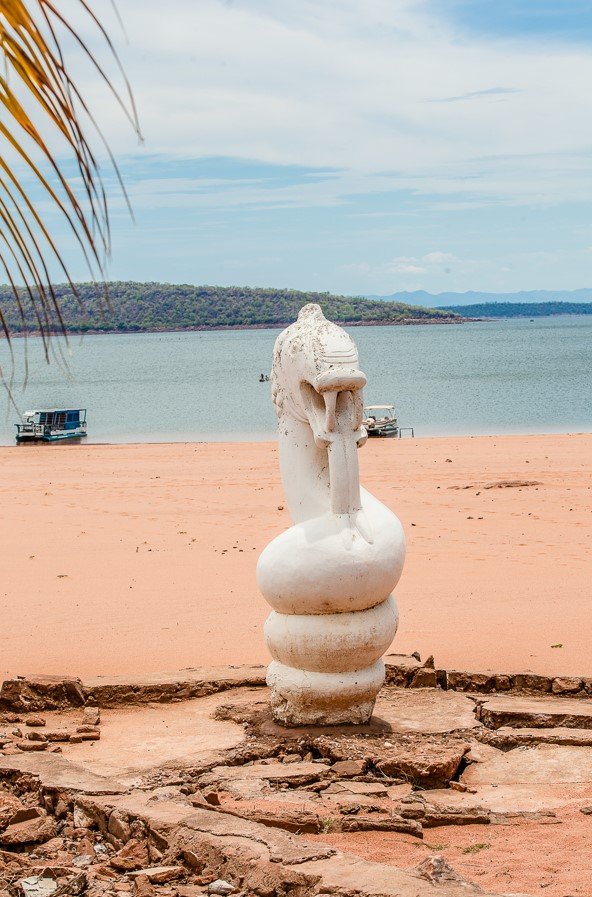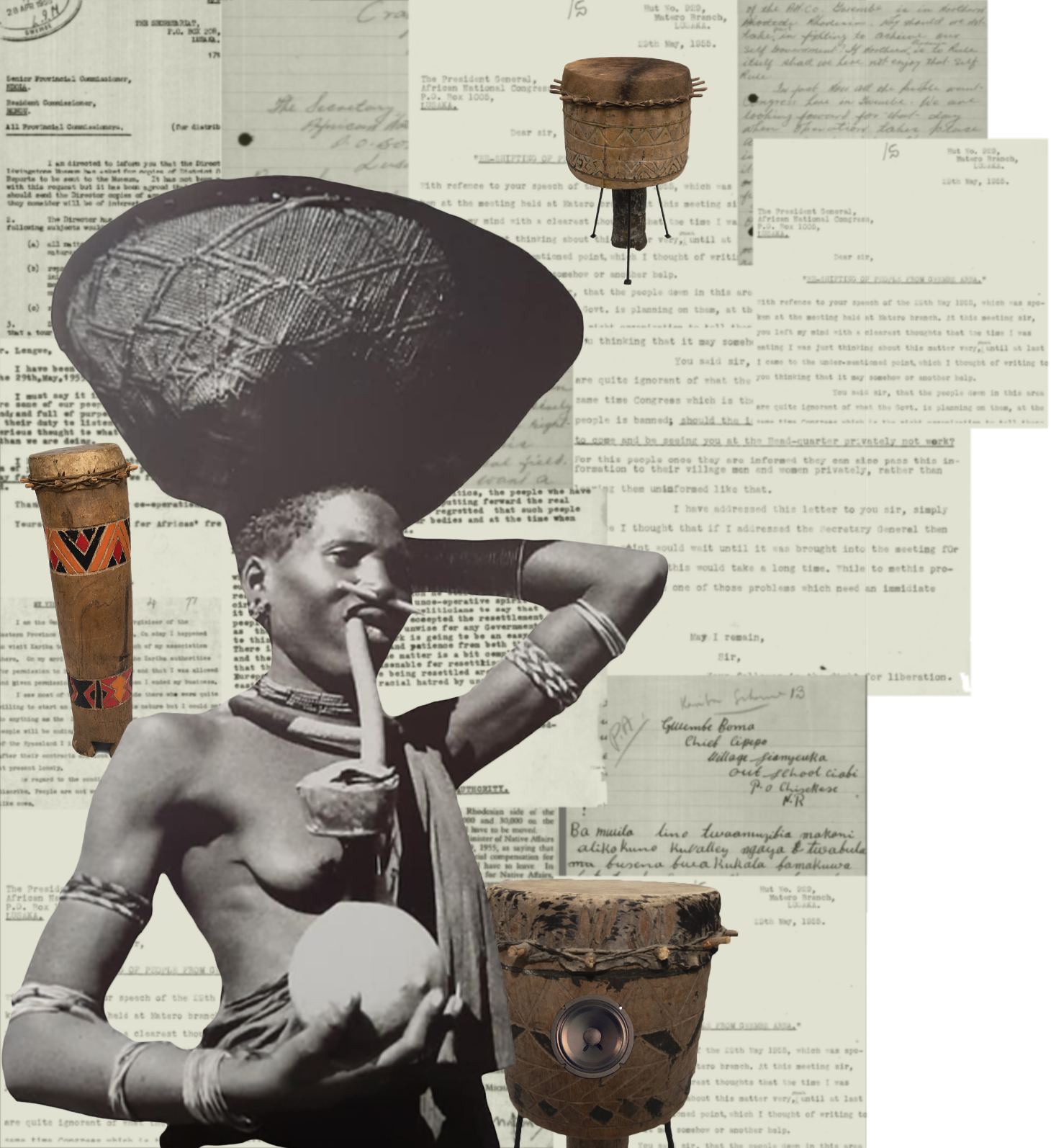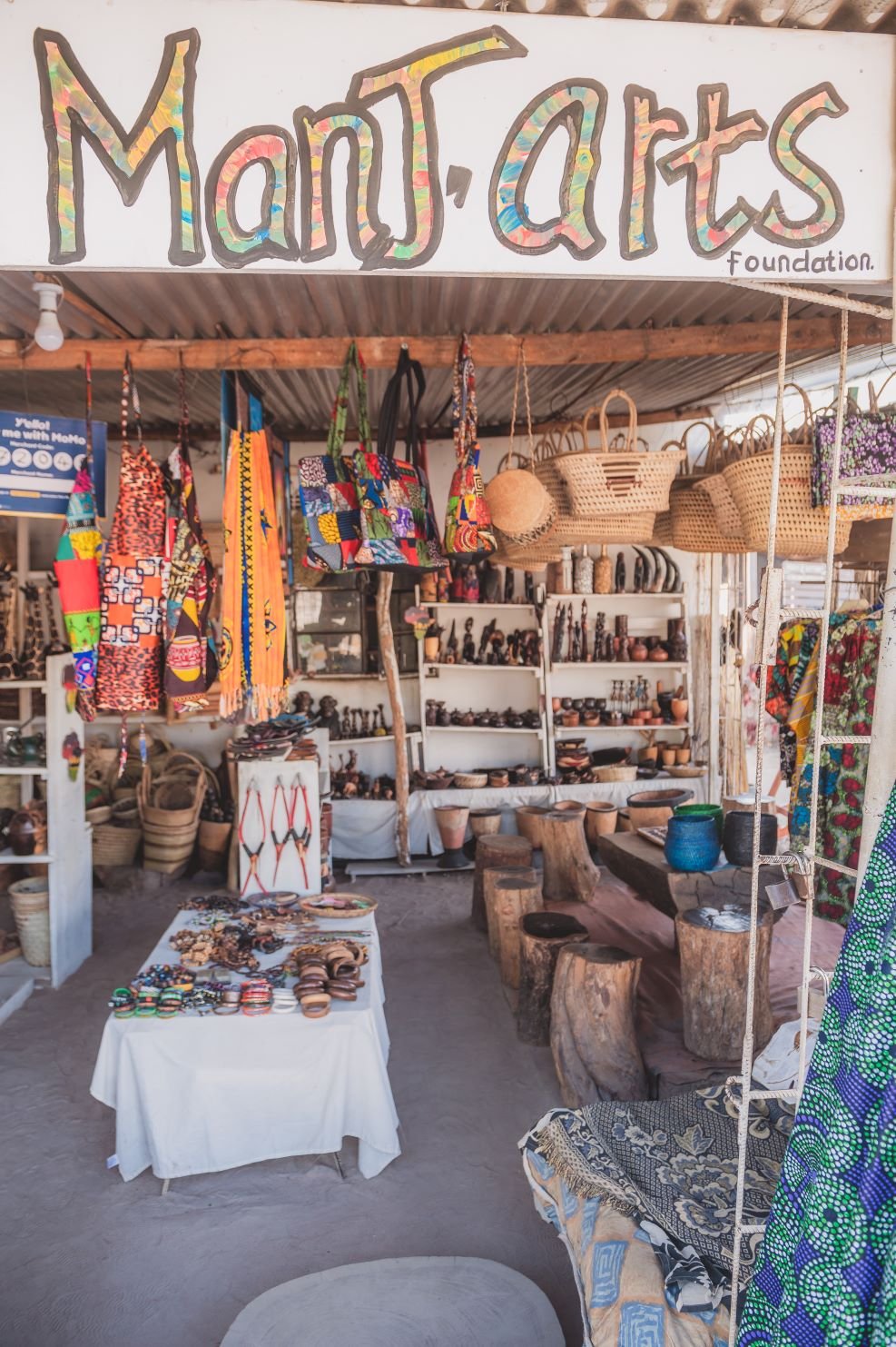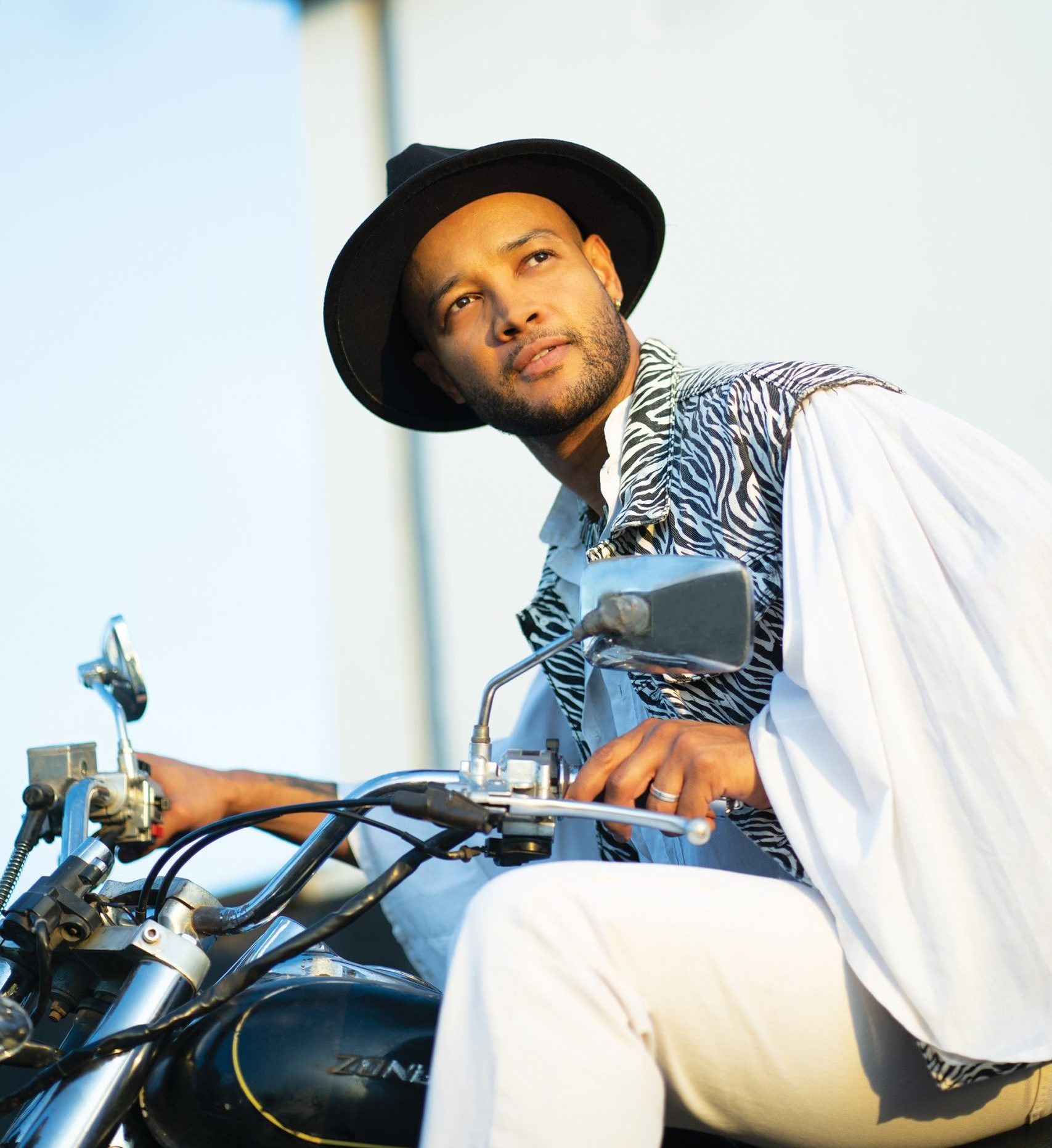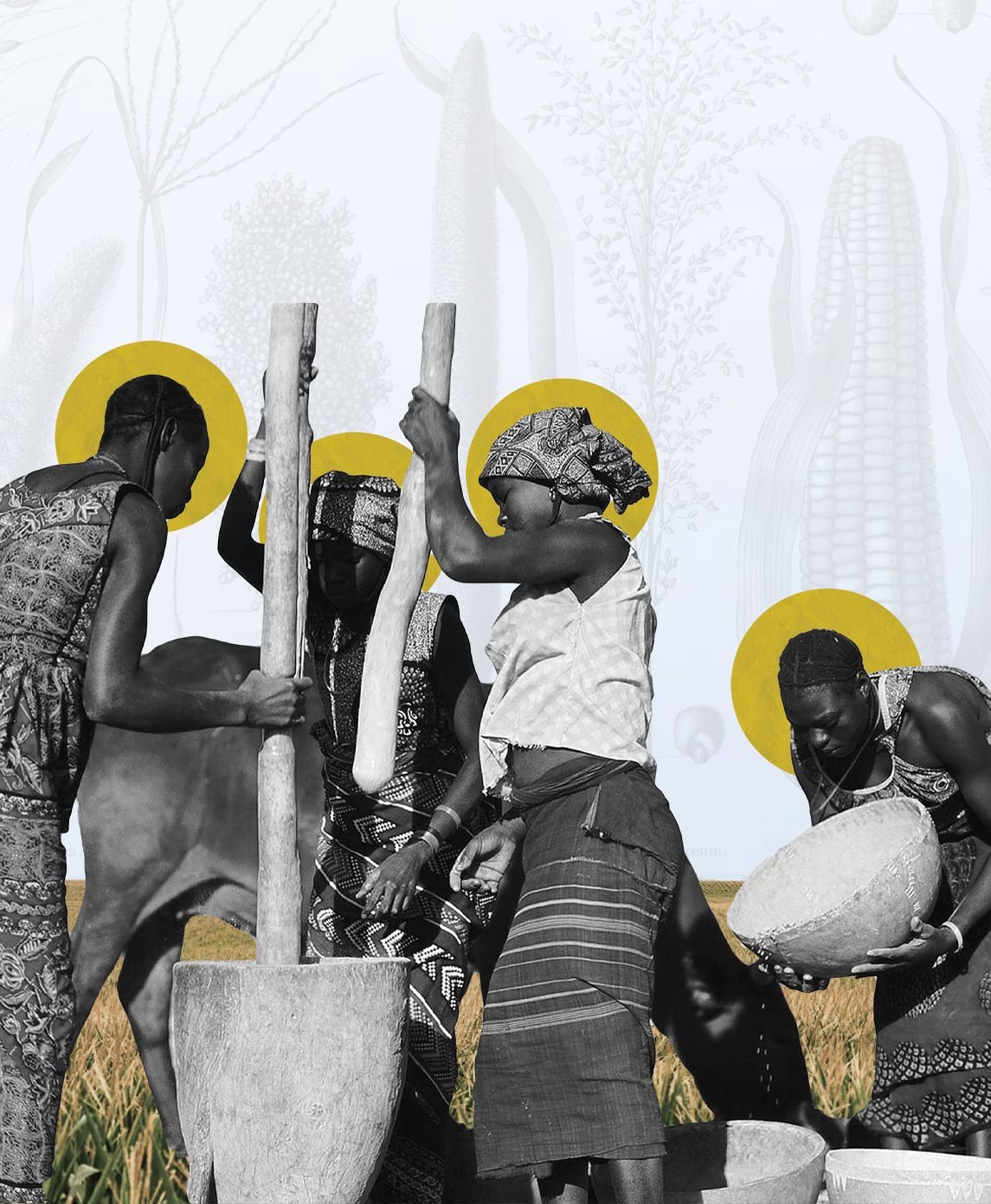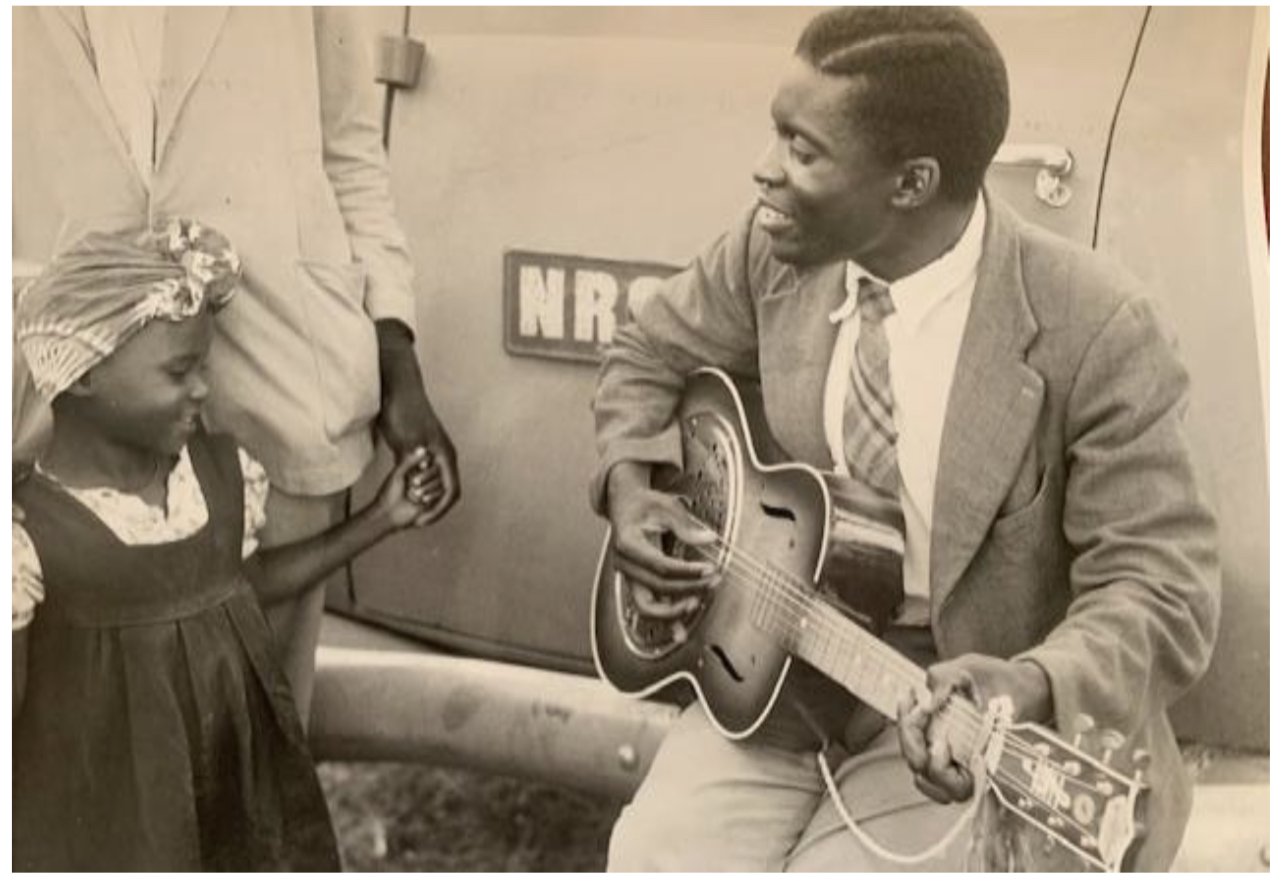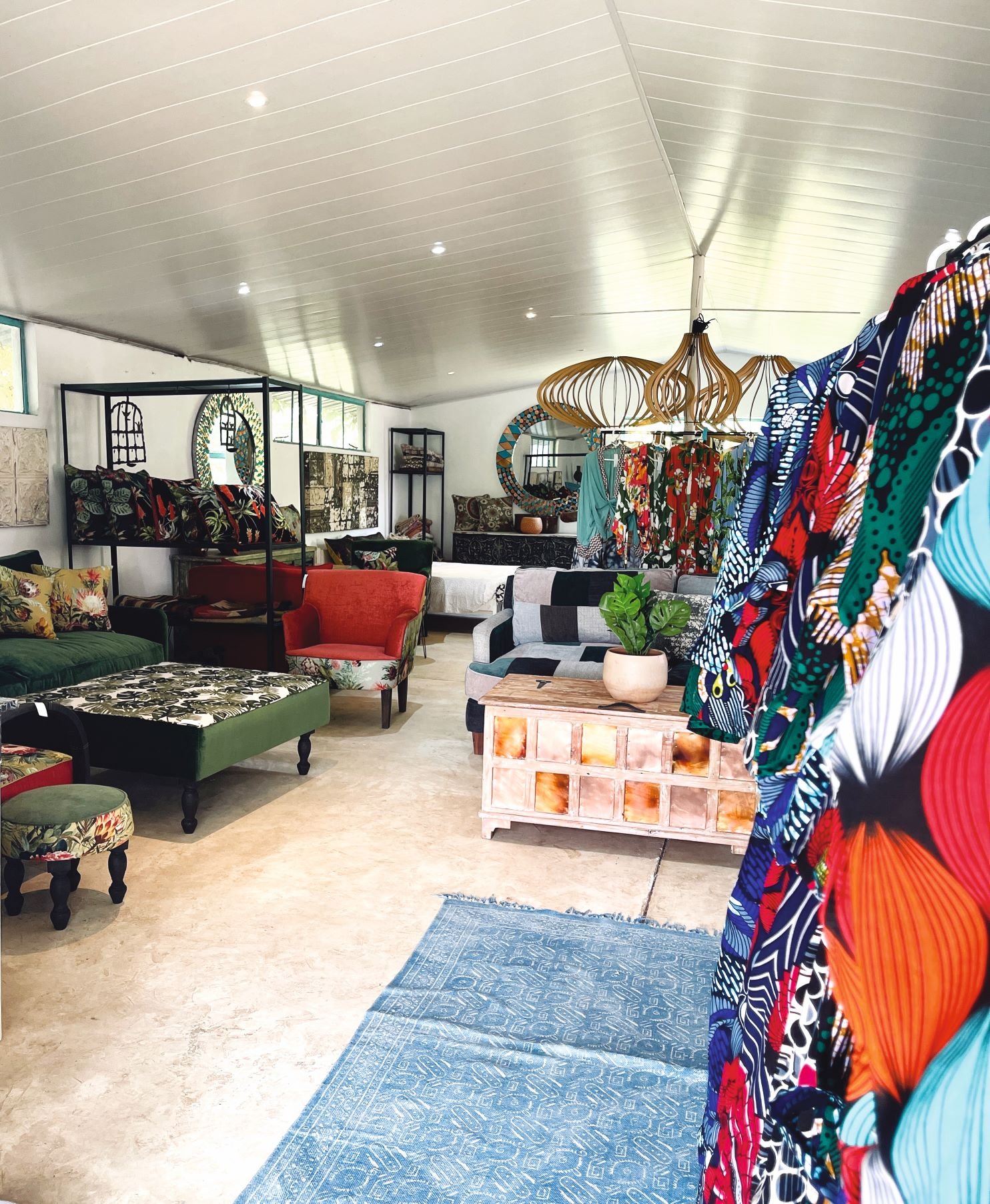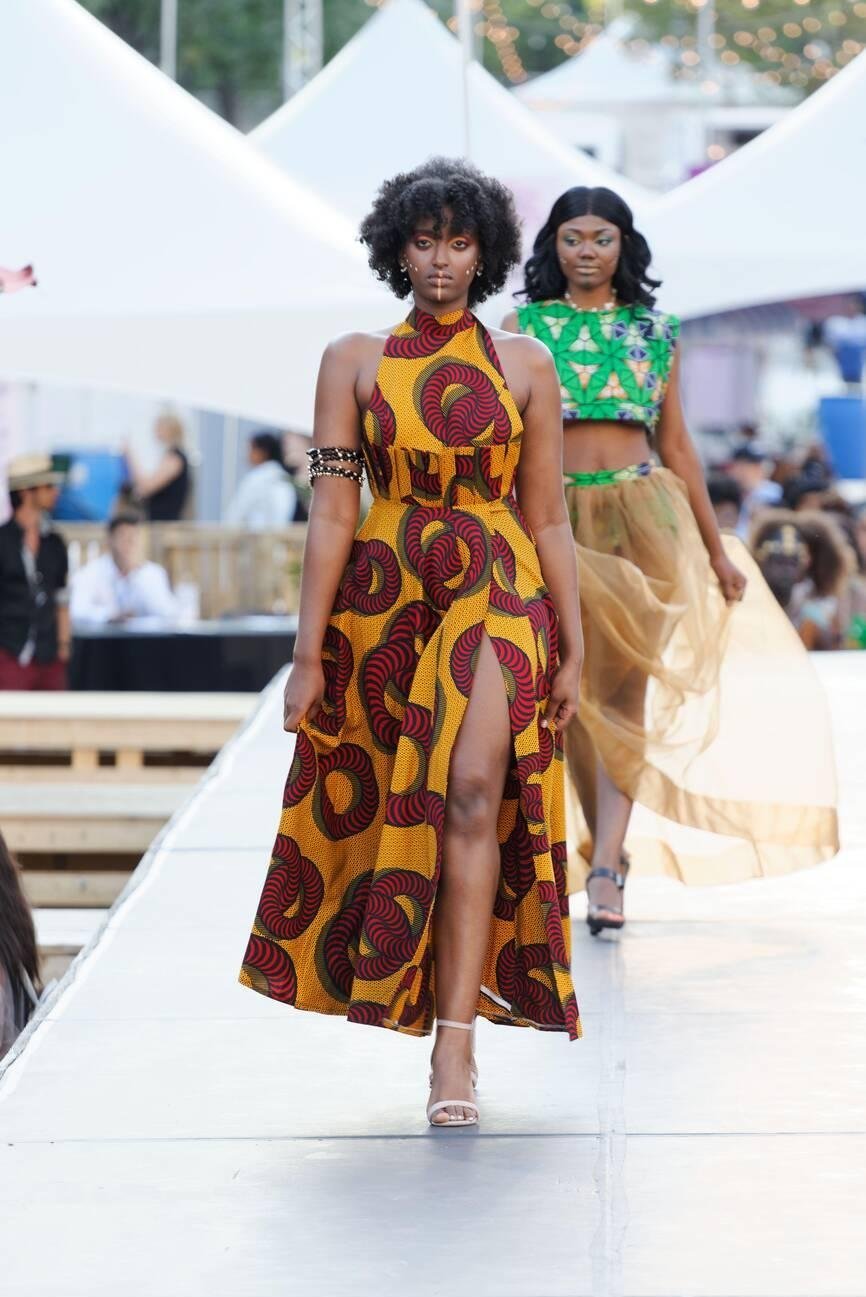Now this is a story all about how a boy from a small rural town turn the Zambian capital upside down…
So biographing Dwain Whitaker by referencing the Fresh Prince of Bel Air opening tune maybe overstating things a little. But some things are undeniable, Dwain’s art around Lusaka has brought a fresh take of artistic expression, and he is quickly establishing himself as the prince of graffiti in Lusaka.
Born in the small farming town of Marondera in Zimbabwe in 1989, Dwain is the middle child of three. Though he spent the first fourteen years of his life in Zimbabwe Dwain’s roots were north of the border. His parent and grandparents having been Zambian, Dwain’s parents, who are both teachers, had moved to Zimbabwe for work.

Most of his secondary education was at Lechwe Education Trust in Kitwe. “I spent most of my childhood running around barefoot in the farms of Marondera, roaming through the bush and fishing with my father, brother and friends. I was very sporty playing all sports from A to Z, with dreams of being a professional cricketer.”
Those dreams took a slight detour when Dwain went to the Zambia Centre for Accountancy Studies to gain his accounting qualifications. Though a leap from his current vocation as a graffiti artist, art was never on his mind as a career choice.
“I never assumed I would have anything to do with art. When I was younger I never spent any time indoors and I wasn’t very good at drawing or painting. I didn’t have much interest in art at junior school and I didn’t participate in art classes at high school either, however, I did doodle a lot!
“When I got bored I doodled, in my journal, on the back of my exercise books, school bag, pencil case, diary, on my arm, everywhere. There was just nothing in the art curriculum I found interesting. I didn’t want to draw trees with charcoal pencils or paint fruit bowls and I still don’t and no disrespect to those that do. I was writing my name with different texts and fonts and drawing cartoons and caricatures all over the place. I still have some of that stuff, I really enjoyed it. I started making more and more time to draw and I got hooked.
“Circa 2006 I started watching a show on DSTV, I forget what channel, called `Miami Ink’; a show about tattooists and tattoo art. I had never seen anything quite like it. I was fascinated and envious of these artists bringing their creations to life, the respect and praise they got from their peers and clients and they were making a living doing this. That is what I wanted. I wanted to be an artist on that level, but not a tattoo artist.”

Though he didn’t want to work with ink and skin, his creative juices had been stimulated by the show. Dwain went from doodling to dabbling. Different designs and mediums were tried out. Each with varying degrees of success.
“I started reproducing my drawings onto t-shirts. Meticulously cutting stencils out of cereal box card with a sharpener blade and painting it down with a paint brush and fabric paint. Sometimes I used earbuds to paint when I ruined my brushes, sometimes I used spray paint when I ran out of fabric paint. The t-shirts I created and the ideas behind the designs were terrible but I wore them, everywhere, proudly. It didn’t matter to me what the final product looked like I had all my hard work on display and my shirt was unique. One of a kind. I loved that. Over time my technique evolved and improved as did the designs, till I started making shirts for other people. I still make shirts now, but only on special occasions.”
Once again it took another moment in front of the television to inspire his next artistic pivot.
“In 2010 I watched a graffiti documentary called Style Wars, it changed my life. I had never heard of the graffiti subculture and I had never seen graffiti ‘tags’, ‘throwups’ or giant, colour filled ‘pieces’; but that’s what I had been doing for the longest time. Playing with writing styles and fonts in my doodles, I had found my niche, or it found me. The more I researched the more I fell in love.”
His decision to transition into art was made easier by the supportive family environment he enjoyed. “My friends and family have always supported my art, whether constructively evaluating my pieces, helping get materials; motivating me in a slump, and sometimes actually helping me paint large murals when I need a hand. It’s tough to do anything without family and friends support, especially art, in Zambia.”
Though the instances of support are numerous, one instance from 2015 stands out. “I was working in accounts Monday to Saturday 8am to 5pm and it was killing my soul. At the same time I was studying to finish ACCA and using all the money I had left to buy paint and art supplies. I would paint when I wasn’t working and struggled to study when I wasn’t painting or working. On one occasion I worked on a building piece for four days, with help from my sister and girlfriend at the time. Knocking off from work at 5pm, grabbing my supplies and going to paint, from about 7pm to the early hours of the morning. I would then steal two or three hours of sleep before heading back to the office until it was finished. I was motivated. I snatched up any opportunity to paint for people, just because I enjoyed doing it. I would always find a way to get the pieces done, no matter the working schedule.

“This lifestyle wasn’t sustainable though, I was frustrated all the time because there just weren’t enough hours in a day to do what I wanted to do. I had to focus on one thing, either be an artist, student or accountant full time, no distractions. Eventually my parents encouraged me to quit my job to finish my studies. So I did, but with all the free time I now had and the momentum I had built up with the painting starting to catch up; I found myself painting more than studying. I spent a lot of money on classes I didn’t attend and exams I didn’t write. I had to throw all caution to the wind and just push this art thing or I would never be happy and if it didn’t work out, at least I could be your friendly neighbourhood accountant. That’s what I`m up to now, giving it everything I`ve got, with my family’s support.”
As with a great many artists in Zambia, Dwain’s education came mainly as a result of personal interest and dedication to his craft. Making use of the internet Dwain attended, what a friend of his coined ‘Youtube University’. With the absolute abundance of information available he was more than catered for his basic curiosity. Web videos were however, simply a tool in his hands. With no institution available locally to help hone his skills, and study abroad beyond him, Dwain was left to make as best of his tools as possible.
In 2012 Dwain had his first taste of an exhibition. “A friend of mine, who used to make his own electronic music decided to have a show before he left for the UK. He wanted me to paint a few pieces of canvas, like the t-shirts I had been making, for display at the show. He already had his beats and routine ready, he showed me how to stretch canvas and for the next five days I painted as much as I could. We were so excited and worked so hard to make sure we were going to blow everyone away at this show, with our crazy new skills, that no one knew we had. Long story short, it did not go as expected. We had to change the date last minute, then load-shedding killed the gig 35 minutes in. It was a nightmare, but it was still highly motivating and I sold a painting at that show. It wasn’t much money but it was the greatest feeling.”
Thankfully for art lovers that was not the last show Dwain was to have. “I have been a member of the Visual Arts Council (VAC) since 2013 and have participated in a number of group shows and had two solo shows (2014 and 2017), at the Henry Tayali Art gallery in the show grounds. Suffice to say, they worked out a little better than my first one.”
Deciding to put on a show is merely the end product of a long process. That process begins by first trying to decide on a concept or theme upon which the show must be premised. This usually means that all the pieces being exhibited would have a common theme. For many artists who prefer to be unrestricted in their inspiration. And though inspiration differs, the source of all true art is feeling. And Dwain is not an exception.
”My greatest inspiration\motivation comes from experiencing deep emotions. My best work comes through when I am wrapped up in emotions, like when I am in love, angry, depressed – that kind of thing. I paint through negative emotions as a kind of therapy, whereas painting with positive emotions, just re-enforces them. I guess most artists have life experiences and then interpret them on a canvas.
“What I paint can be random or it can be something I’ve been thinking about for a long time but not had the opportunity to paint yet. Usually, as most graffiti artists do, I paint my chosen graffiti name, `Take`, in as many different ways, with different colour combinations as I possibly can. The name, `Take` comes from my surname Whitaker. It is rooted in a belief that you should, `take what you have and do the best that you can,`. It shows struggle and the journey I’ve taken to be where I am.
Though the search for inspiration often takes Dwain to dark places, his work is often full of light moments. “There are many, many, anecdotes from my work. I’ve been on so many adventures and experienced places in Lusaka in totally different ways to most people. I meet a lot of people of all walks of life.
“My favourite story that I don’t tell often is when I almost cried in Subway, half way through a sandwich because of a comment a child made about our painting that day. We had been painting a container in Ngombe. A forty foot recycling container that had to be finished that day.
“So we arrived at 8am with all our spray paint and got to work. Some kids that had been playing in the street sat down to watch us paint and as we painted more and more people would stop and watch for a while and leave.
“There were a few children that sat there and watched us paint the whole day till about 17.30. When we finally finished and were taking a few pictures and talking about what we had done that day, one of the children came over and wanted to talk us. The manager of the site translated for me because my Nyanja is terrible and the boy’s English, whilst slightly better than my Nyanja, still resulted in a lot being lost in translation. The boy said that he wanted to do art but he didn’t quite get the opportunity to do it at school, but he would continue to learn on his own because when he grows up he wants to have a job just like ours.
“I was shattered at the time so we gave him some words of encouragement, said ‘Thank You’ and left. We went straight to Subway, as we hadn’t eaten since we picked up the first spray can at 8am. As I wolfed down my sandwich and guzzled down my water, I was thinking about the day and what we had accomplished.
“It was the first time we had done anything that big in a day, it was our first container and it looked great. With revitalising effect of food, the gravity of what the boy had said hit me. It was the first time we had seen for ourselves that we were doing more than just painting and our work had inspired more than just a selfie or a music video. It caught me right in the throat and I struggled not to ugly cry in that packed subway.”
With inspiration drawn from within, motivation is from with out. “Whenever I do have those moments of doubt, this plays in my head like my own little motivational poster. Whilst this may not be one of my most comical or adventurous stories, it is one that stays close to my heart and I do hope that it helps to motivate someone out there in a similar position one day.”
Contacts:
Facebook: Take Graffiti Zambia
Instagram: Take.graff
